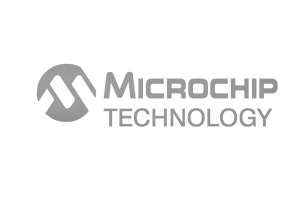ATMEGA64RFR2-ZU Overview
The ATMEGA64RFR2-ZU is a high-performance 8-bit microcontroller with integrated RF transceiver capabilities, designed for embedded wireless applications. Combining a robust AVR core with low power consumption and advanced connectivity features, this device enables reliable and efficient communication in industrial and consumer environments. Its integrated 2.4 GHz transceiver supports IEEE 802.15.4-compliant protocols, making it ideal for mesh networking and IoT solutions. Engineers and sourcing specialists trust this solution for its balance of processing power, RF integration, and power efficiency. For more details, visit the IC-Hersteller Website.
ATMEGA64RFR2-ZU Technical Specifications
| Parameter | Spezifikation |
|---|---|
| Zentrale Architektur | 8-bit AVR RISC |
| Betriebsfrequenz | Up to 16 MHz |
| Flash-Speicher | 64 KB |
| SRAM | 4 KB |
| EEPROM | 2 KB |
| Integrated RF Transceiver | 2.4 GHz IEEE 802.15.4 compliant |
| Betriebsspannung | 1.8 V to 3.6 V |
| Paket Typ | 64-pin QFN |
| ADC-Auflösung | 10-bit |
| Kommunikationsschnittstellen | USART, SPI, TWI (I2C compatible) |
ATMEGA64RFR2-ZU Key Features
- Integrated 2.4 GHz RF Transceiver: Enables seamless wireless connectivity directly within the microcontroller, reducing component count and design complexity.
- Efficient 8-bit AVR Core: Offers predictable instruction execution and low power consumption, critical for battery-powered and real-time applications.
- Mehrere Kommunikationsschnittstellen: Includes USART, SPI, and TWI for flexible integration with peripheral devices and external modules.
- Robust Memory Configuration: Combines 64 KB of Flash with 4 KB SRAM and 2 KB EEPROM to store code, data, and non-volatile parameters efficiently.
- Low Voltage Operation: Supports operation down to 1.8 V, enabling extended battery life and compatibility with various power sources.
- Compact 64-pin QFN Package: Facilitates high-density board layouts while ensuring thermal efficiency and reliable soldering.
- 10-bit ADC: Provides precise analog signal conversion, useful for sensor interfacing in embedded applications.
ATMEGA64RFR2-ZU Advantages vs Typical Alternatives
This device offers integrated wireless communication combined with a proven AVR core, providing enhanced sensitivity and reliability compared to standalone microcontrollers paired with external transceivers. Its low power operation and compact package simplify design and improve system efficiency. The built-in RF transceiver reduces PCB complexity and cost, making this product advantageous for industrial and IoT applications requiring seamless wireless connectivity and precise control.
🔥 Meistverkaufte Produkte

Texas Instruments BQ24075 Lineares Batterieladegerät IC - 5mm x 4mm QFN Gehäuse

Texas Instruments INA219 Stromsensormodul - SOIC-Gehäuse, Präzisionsüberwachung

Texas Instruments LM4041 Präzisions-Spannungsreferenz - SOT-23-Gehäuse

Texas Instruments OPA2134 Audio-Operationsverstärker - Zweifach, hochleistungsfähig, SOIC-8-Gehäuse
Typische Anwendungen
- Wireless sensor networks and mesh networking solutions, leveraging the integrated IEEE 802.15.4 RF transceiver for robust communication in industrial and home automation.
- Smart metering systems requiring low power consumption and reliable wireless data transmission for utility monitoring.
- Remote controls and keyless entry systems benefiting from compact design and integrated RF capabilities.
- Embedded IoT devices where seamless integration of microcontroller and RF transceiver reduces size and development time.
ATMEGA64RFR2-ZU Brand Info
This product is part of a specialized line of microcontrollers combining AVR core technology with integrated RF transceivers, designed to meet the needs of modern wireless embedded applications. The brand emphasizes high integration, low power consumption, and ease of use, targeting developers who require reliable and efficient solutions for industrial, automotive, and consumer markets. The device??s heritage ensures robust performance and extensive ecosystem support, facilitating rapid product development and deployment.
FAQ
What communication protocols are supported by this microcontroller?
The device supports several standard communication interfaces including USART, SPI, and TWI (which is compatible with I2C). Additionally, it features an integrated 2.4 GHz RF transceiver compliant with IEEE 802.15.4 standards, enabling wireless communication protocols used in mesh networks and IoT applications.
🌟 Ausgewählte Produkte

"MAX9312ECJ+ Präzisionsspannungskomparator im DIP-Gehäuse für zuverlässige Leistung kaufen"

QCC-711-1-MQFN48C-TR-03-1 Bluetooth Audio SoC with MQFN48C Package

Modell 0339-671-TLM-E - Hochleistungs-TLM-E-Gehäuse für erweiterte Funktionalität

1-1415898-4 Steckergehäuse, Elektrischer Draht-zu-Platine, Buchse, verpackt
What is the operating voltage range for this device?
This microcontroller operates over a voltage range from 1.8 V up to 3.6 V. This wide range allows it to be used in battery-powered systems and various industrial power environments, contributing to flexible application design and longer battery life.
How much memory does this component provide for program and data storage?
It offers 64 KB of Flash memory for program storage, 4 KB of SRAM for data and stack operations, and 2 KB of EEPROM for non-volatile data storage. This memory configuration supports complex firmware and persistent parameter storage in embedded systems.
📩 Kontakt
What are the main benefits of the integrated RF transceiver?
Integrating the RF transceiver within the microcontroller reduces component count, board size, and power consumption. It simplifies wireless design by providing native support for 2.4 GHz communication compliant with IEEE 802.15.4, which is essential for reliable low-power wireless networking and IoT applications.
In what package is this microcontroller available, and why is it significant?
This device comes in a 64-pin QFN package, which offers a compact footprint ideal for high-density PCB designs. The package also ensures good thermal performance and mechanical robustness, making it suitable for industrial and commercial embedded applications where space and reliability are critical.






